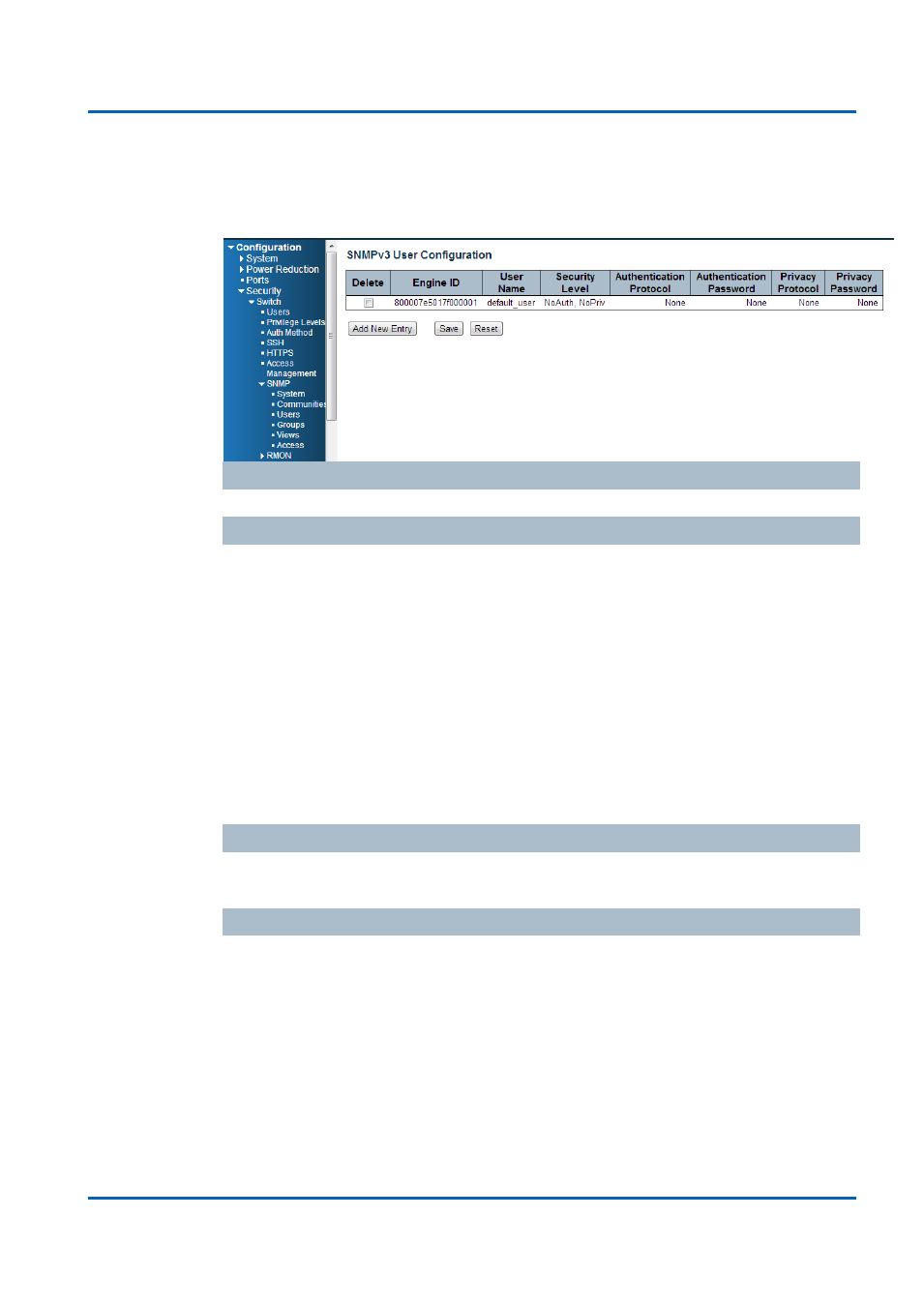Niveo Professional NGSME16T2H User Manual
Page 54

Chapter 3: Featuring Configuration
– Web UI
Featuring Configuration
– Web UI
NGSME16T2H User Manual | 54
SNMPv3 User Configuration
Configure SNMPv3 user table on this page. The entry index keys are Engine ID and
User Name.
Delete
Check to delete the entry. It will be deleted during the next save.
Engine ID
An octet string identifying the engine ID that this entry should belong to. The string
must contain an even number(in hexadecimal format) with number of digits between
10 and 64, but all-zeros and all-'F's are not allowed. The SNMPv3 architecture uses
the User-based Security Model (USM) for message security and the View-based
Access Control Model (VACM) for access control. For the USM entry, the usm User
Engine ID and usm User Name are the entry's keys. In a simple agent, usm User
Engine ID is always that agent's own snmp Engine ID value. The value can also take
the value of the snmp Engine ID of a remote SNMP engine with which this user can
communicate. In other words, if user engine ID equal system engine ID then it is
local user; otherwise it's remote user.
User Name
A string identifying the user name that this entry should belong to. The allowed string
length is 1 to 32, and the allowed content is ASCII characters from 33 to 126.
Security Level
Indicates the security model that this entry should belong to. Possible security
models are:
NoAuth, NoPriv: No authentication and no privacy.
Auth, NoPriv: Authentication and no privacy.
Auth, Priv: Authentication and privacy.
The value of security level cannot be modified if entry already exists. That means it
must first be ensured that the value is set correctly.
